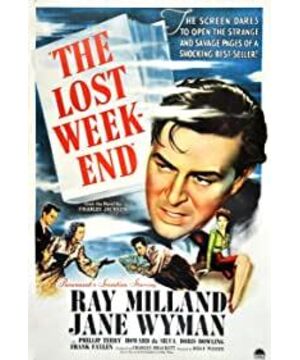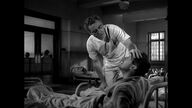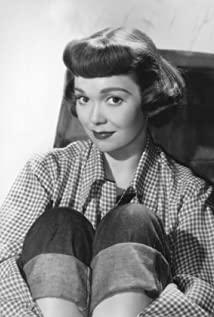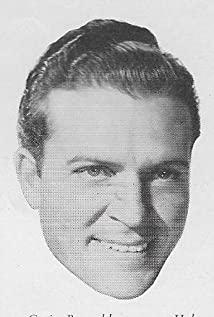The Birth of Film Noir: Paris, 1946—1959 Noir Is Born: Paris, 1946—1959
◉ If the heyday of film noir was from 1941 to 1958, why did this term not be widely used until the 1970s?
☉Heyday: The term film noir echoes the "Noir Fiction Series." The first use of it appeared in reviews of five film works produced before and after World War II. At that time, these five films The films are being released consecutively in Paris. They are: "The Maltese Eagle", "Double Indemnity", "Laura", "Murder, My Sweet" (1944), and-considering it is in most of the subsequent articles The fact that it has disappeared in China is a bit surprising-"The Lost Weekend" (The Lost Weekend, 1945).
The Apartment, 1960
✒︎: In my opinion, "Difficult to Meet and Say" is outdated. The famous flower house scene in the film seems to be too exaggerated now, and it does not grasp the behavior of the alcoholic well; Wilder's " "The Lost Weekend" (1945) was seventeen years earlier than "Difficult to Meet and Difficult to Say," but the film’s performance of alcohol addiction is closer to contemporary movies.
Chapter 12 Feedback: Annotation of comments on the first draft
Too On-the-Nose (Too On-the-Nose)
✒︎: When something is too much-too straightforward and insufficient subtext-it is called "too on-the-nose". In other words, the film pursues not only expression, but also subtlety.
In the well-known film "Escape from Las Vegas", in order to show that the protagonist is a disgraceful and disgraceful person-guess what occupation he is? Screenwriter—The author portrayed him as an alcoholic. The audience saw him striding through the supermarket, buying a shopping cart full of wine. In many places throughout the film, he was seen directly picking up the wine bottle and drinking, vomiting, and then fell to the ground unconscious. This is the performance of being overly plain. An important feature of the protagonist's character—drinking—is not implicit but explicit, expressed not in subtext but in a straightforward manner.
In contrast, "Lost Weekend" handles alcoholism much better. In the film, the protagonist Ray Mirand is a drug addict. His alcoholism is not expressed by sipping from the bottle, but he sneaks to the window, opens the window and pulls a rope. At the end, we see a hidden Wine bottle. We don't even need to see him take a sip to realize that he is a hopeless alcoholic.
Chapter One Darkness Is Everywhere: The Derivation of Classic Noir Films
Introduction to the Tragic World of Black Nothingness
✒︎: More writings of film noir emphasize its "cross-genre" characteristics. The list of noir films by different scholars includes both hard-line crime horror films, as well as social problem films such as "The Lost Weekend" (1947) and "Cross Fire" (1947), gangsters Films include "High Sierra" (1941) and "White Heat" (1949), a mixture of family melodramas and horror films is "Mildred Pierce" (Mildred Pierce, 1945), and even the western film " Pursued (1947) is also regarded as a noir film. These films were once labeled as film noir, or the blackness in them was noticed.
In fact, it is problematic to treat film noir as a "cross-genre" film. This division does not find the essential characteristics of film noir, because in fact, every film genre has a "cross-genre" characterization. Only when film noir regains popularity and returns, the status of film noir as a film genre can be confirmed.
Chapter 6 The History of Film Music Development (3): 1960—Now Electronic Music
✒︎: At first, electronic music was exclusively used for horror and science fiction films. But in the soundtracks Mikros Rozsa made for the movies "Doctor Edward" (1945) and "Lost Weekend" (1945), electronic music began to appear.
Chapter 6 Hitler's Cultural Revolution Section 2 The Purification of Art
✒︎: Under the new censorship and control conditions, a few people in the film industry are more willing to look for opportunities in the free environment of Hollywood. Those who found the opportunity included director Fritz Lang, who has made a series of successful films such as "Murder M", "Metropolis" and "The Nibelungen" (The Nibelungen), the latter It has always been Hitler's favorite epic film. Long's film "The Testament of Dr. Mabuse" (The Testament of Dr. Mabuse) indirectly satirized the Nazi Party. It was originally planned to be released in the spring of 1933, but was banned when the premiere day was approaching. Following in his footsteps in exile was Billy Wilder (Billy Wilder). The popular romance films he made before going abroad rarely reveal his Hollywood film "Double Indemnity" (Double Indemnity) and "Lost Weekend" "(The Lost Weekend) and other movies show boldness. In the decades that followed, both of them created some of the most successful films in Hollywood.
Chapter 12 Abusive Tendency
✒︎: When neurotic patients fall into the well of despair, they will make various attempts to make themselves strong. If his creativity is not destroyed, he will spend his energy on things that can make him feel fulfilled, and use this to deal with the cruel life. He may devote himself to religious activities, or he may be busy in a group activity. Although he will not invest too much enthusiasm, but it will not cause damage to the work, so what he does is still valuable.
There are also patients who marginalize themselves, give up their ambitions in life, and major events in life, just want to retreat to the edge of life and have a little bit of fun. He may temporarily satisfy his cravings from a hobby or occasional enjoyment, such as eating, drinking, dressing, or indulging in sex. He can no longer get a sense of accomplishment from stable things. He can only look for short-term stimuli, drift with the flow, and finally wipe out all expectations for life. Being addicted to alcohol is a more serious manifestation of such patients. Charles Jackson described this very well in the famous "Lost Weekend".
Chapter 5 Self-Hate and Inferiority
✒︎: To what extent will the proactive self-destruction tendency gradually destroy the integrity and depth of personal personality? Regardless of whether it is rough or delicate, a person's integrity will be damaged to some extent, which is the result of the development of neurosis. Disengagement from the self, inevitable subconscious excuses, unresolved conflicts caused by subconscious compromise and low self-esteem, all these factors will lead to the weakening of morality, which will reduce the ability to treat oneself sincerely. We can observe some acute or chronic demoralization or moral deterioration. For example, a person who ignores his appearance will make himself hasty, unclean or obese; he indulges in drinking and sleeps less; he does not pay attention to his body—for example, he does not see a dentist. He eats a lot or very little, never walks; he ignores his work and what interests him most, and becomes very lazy. He may become a mess, at least he will prefer to associate with some superficial people or bad companions. He will become untrustworthy, he will beat his wife and children, and begin to lie or steal. This process change is most pronounced among alcoholics, as described in the book "Lost Weekend". But they can also manifest themselves in very hidden or subtle ways. Under obvious circumstances, even an untrained observer will find that these people are trying to "shatter themselves." In psychoanalysis, we know that this description is not sufficient. These situations can only happen when people are overwhelmed by low self-esteem and hopelessness, so that their building power can no longer suppress the impact of self-destructive drive. This self-destructive drive thus has free and unobstructed dominance. It is manifested in subconscious decisions that actively degrade one's own morals. In the form it exhibits, there is an intention to actively and systematically degrade oneself. George Orwell has described this situation in "1984"; every experienced analyst will learn from him. Seeing how neurotic patients treat themselves in their descriptions, their dreams also indicate that they may actively throw themselves into the gutter.
Neurotic patients react differently to this internal process. They may be happy, self-pity, or horror. These reactions are usually inconsistent with the process of self-depravity in his consciousness.
Chapter 1 Addiction is preventable and treatable
All parties must take responsibility
✒︎: The impression that mass entertainment has created in the public mind for decades makes people think that the only way to treat substance addiction is to participate in various mutual aid associations. Indeed, countless movies have reinforced this view over and over again, such as the film "Lost Weekend" starring Ray Milland in 1945...it is true that evidence-based medicine therapy appeared in the early 1990s. And many movies about addiction were shot before that. However, the climax of the movie often has a scene full of drama. The protagonist overcomes alcohol or drug addiction through his own willpower. This stage is still very popular in Hollywood. And treating addiction as a chronic disease and treating it with modern medical methods is like treating high blood pressure. Compared with the movie, the plot is as plain as boiled water.
View more about The Lost Weekend reviews











